Nag-import ka ng isang armada ng mga electric tuk-tuks na na-advertise upang pumunta ng 50 km/h, ngunit sa mga kalsada ng iyong lungsod, bahagya silang umabot sa 35 km/h. Ngayon ang iyong mga driver ay nagrereklamo, at ang iyong negosyo ay mukhang mabagal.
Ang bilis ng isang de-koryenteng tuk-tuk ay itinakda ng motor RPM at magsusupil, ngunit ang bilis ng pinakamataas na mundo ay labis na naiimpluwensyahan ng pag-load, lupain, at mga lokal na batas. Ito ay isang balanse sa pagitan ng mga setting ng pabrika at ang aktwal na kapaligiran sa pagpapatakbo.
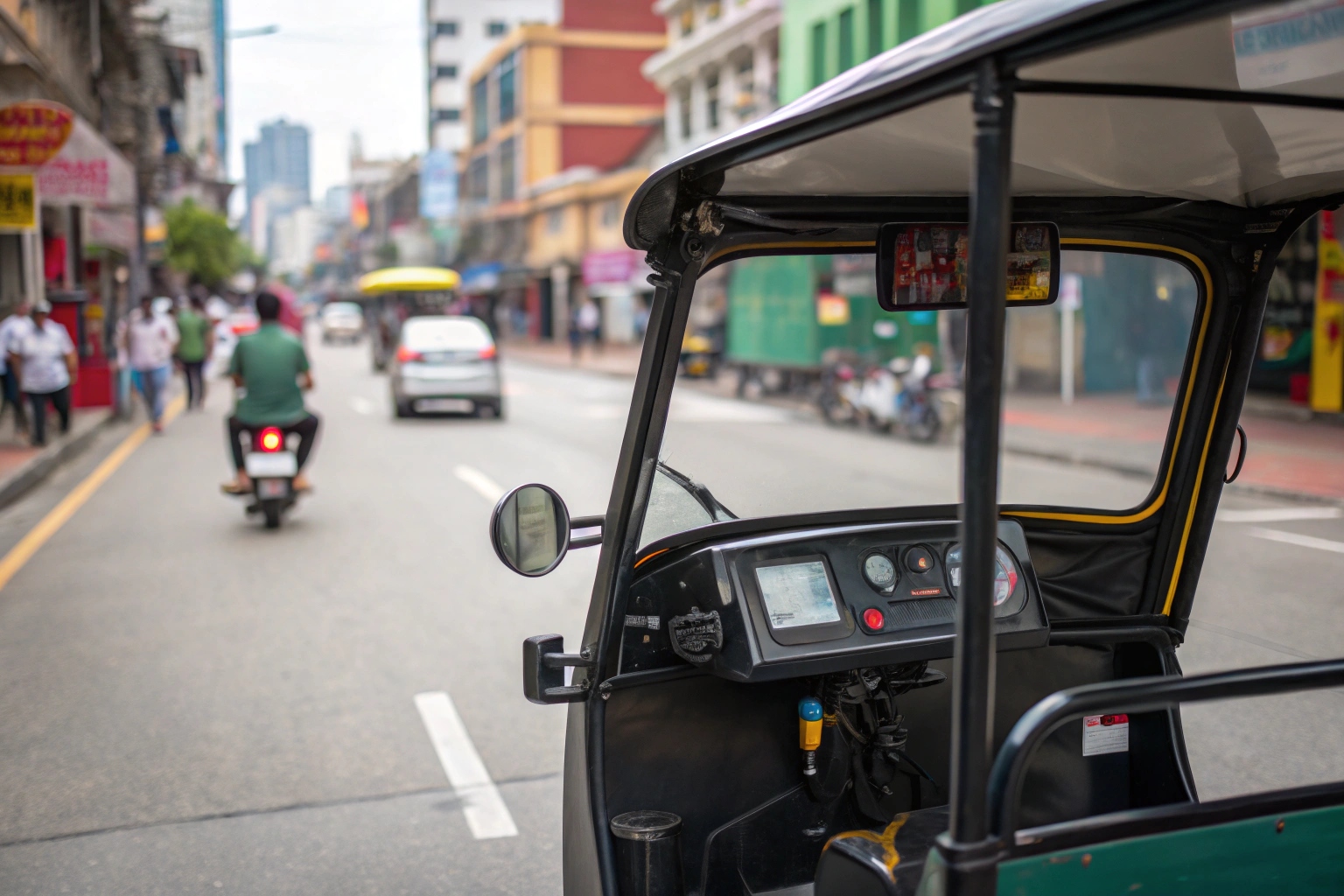
Bilang isang pabrika that exports globally, one of the first questions I always get is, "How fast can it go?" Ang sagot ay hindi lamang isang numero. Ang bilis na maaari nating itayo sa sasakyan at ang bilis na makukuha mo ay maaaring maging dalawang magkakaibang bagay. Ang isang tuk-tuk na idinisenyo para sa mabibigat na kargamento ay may iba't ibang mga prayoridad ng bilis kaysa sa isang idinisenyo para sa pagdala ng mga pasahero bilang isang taxi. Ang pag -unawa sa kung ano ang kumokontrol sa bilis ay makakatulong sa iyo na mag -order ng tamang produkto para sa iyong merkado at maiwasan ang pagkabigo.
Aling mga teknikal na kadahilanan ang direktang nakakaapekto sa bilis ng kuryente na tin-tak?
Tinitingnan mo ang mga sheet ng spec na may iba't ibang mga motor at magsusupil, ngunit hindi mo alam kung aling kumbinasyon ang maghahatid ng bilis ng iyong mga pangangailangan sa negosyo. Ang pagkalito na ito ay maaaring humantong sa isang masamang pamumuhunan.
Ang tatlong pangunahing mga kadahilanan ng teknikal ay ang maximum na RPM ng motor, ang limitasyong bilis ng bilis ng controller, at ang ratio ng gear sa likurang ehe. Ang boltahe ng system (V) ay gumaganap din ng isang malaking papel, dahil ang mas mataas na boltahe ay nagbibigay -daan sa mas mataas na motor RPM.
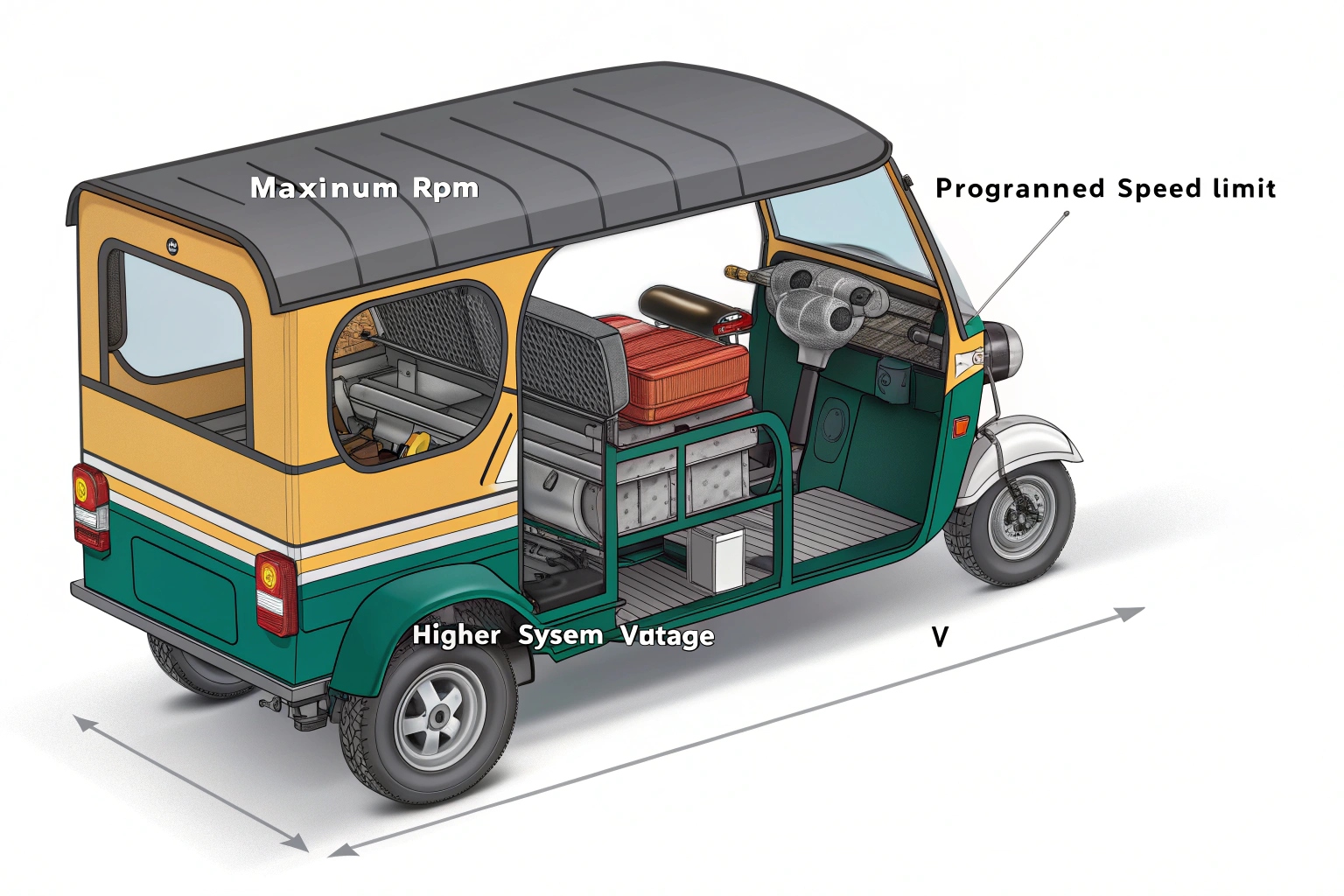
Mula sa aming sahig ng pabrika, masasabi ko sa iyo na nagtatayo kami ng potensyal na bilis ng sasakyan gamit ang ilang mga pangunahing sangkap na dapat magtulungan. Ito ay isang maingat na balanseng sistema. Kung ang isang bahagi ay mismatched, hindi mo makuha ang pagganap na inaasahan mo. Halimbawa, a mataas na bilis ng motor ay walang silbi kung ang magsusupil ay may isang mababang limitasyon ng bilis na na -program dito. Narito kung paano kinokontrol ng pangunahing mga teknikal na bahagi ang bilis.
| Teknikal na kadahilanan | Paano nakakaapekto sa bilis | Pagsasaalang -alang sa pabrika |
|---|---|---|
| Motor rpm | Ito ang pinakamataas na bilis ng pag -ikot ng motor. Ang isang motor na may mas mataas na rating ng RPM ay may potensyal para sa isang mas mataas na tuktok na bilis. | Pinagmulan namin ang mga motor na may tiyak na mga rating ng RPM na idinisenyo para sa trabaho ng sasakyan - halimbawa, isang mas mataas na RPM para sa isang taxi ng pasahero. |
| Limitasyon ng Controller | Ito ay isang elektronikong gobernador na itinakda sa amin sa pabrika. Maaari itong i -cap ang pinakamataas na bilis para sa kaligtasan o upang matugunan ang mga ligal na patakaran. | Ito ay isang pangkaraniwang kahilingan. Ipinrograma namin ang magsusupil batay sa mga pangangailangan ng kliyente at mga regulasyon ng import ng bansa. |
| Gear Ratio (Axle) | This translates the motor's rotation into the wheels' rotation. A "high-speed" Nagbibigay ang ratio ng mas maraming pinakamataas na bilis ngunit mas kaunting paghila ng kapangyarihan (metalikang kuwintas). | Ito ay isang kritikal na pagpipilian. Tumutugma kami sa mga ratios sa pangunahing paggamit: mataas na metalikang kuwintas para sa mabibigat na kargamento, balanseng bilis para sa mga taksi. |
| Boltahe ng system | Ang isang mas mataas na sistema ng boltahe, tulad ng 72V, ay nagbibigay -daan sa motor na mas mabilis na paikutin kaysa sa isang mas mababang sistema ng boltahe, tulad ng 60V. | Ang pag -upgrade sa isang 72V system ay isang karaniwang paraan para makakuha ng mas maraming bilis, ngunit nangangailangan ito ng isang pagtutugma ng motor at baterya. |
Paano nakakaapekto ang mga kondisyon sa kalsada at pag-load ng real-world e-tak na bilis?
Ang iyong bagong tuk-tuk ay tumama sa tuktok na bilis nito kapag walang laman sa isang perpektong kalsada. Ngunit sa mga pasahero at kargamento, nagpupumilit itong magpatuloy, na ginagawang hindi maaasahan at mabagal ang iyong negosyo.
Ang mga mabibigat na naglo -load at paakyat na pag -akyat ay pinipilit ang motor na gumamit ng mas maraming kapangyarihan upang ilipat lamang, na direktang nagpapababa sa pinakamataas na bilis. Ang paglaban ng hangin at magaspang na mga kalsada ay lumilikha din ng pag-drag, karagdagang pagbagal ng sasakyan mula sa bilis na na-rate ng pabrika nito.
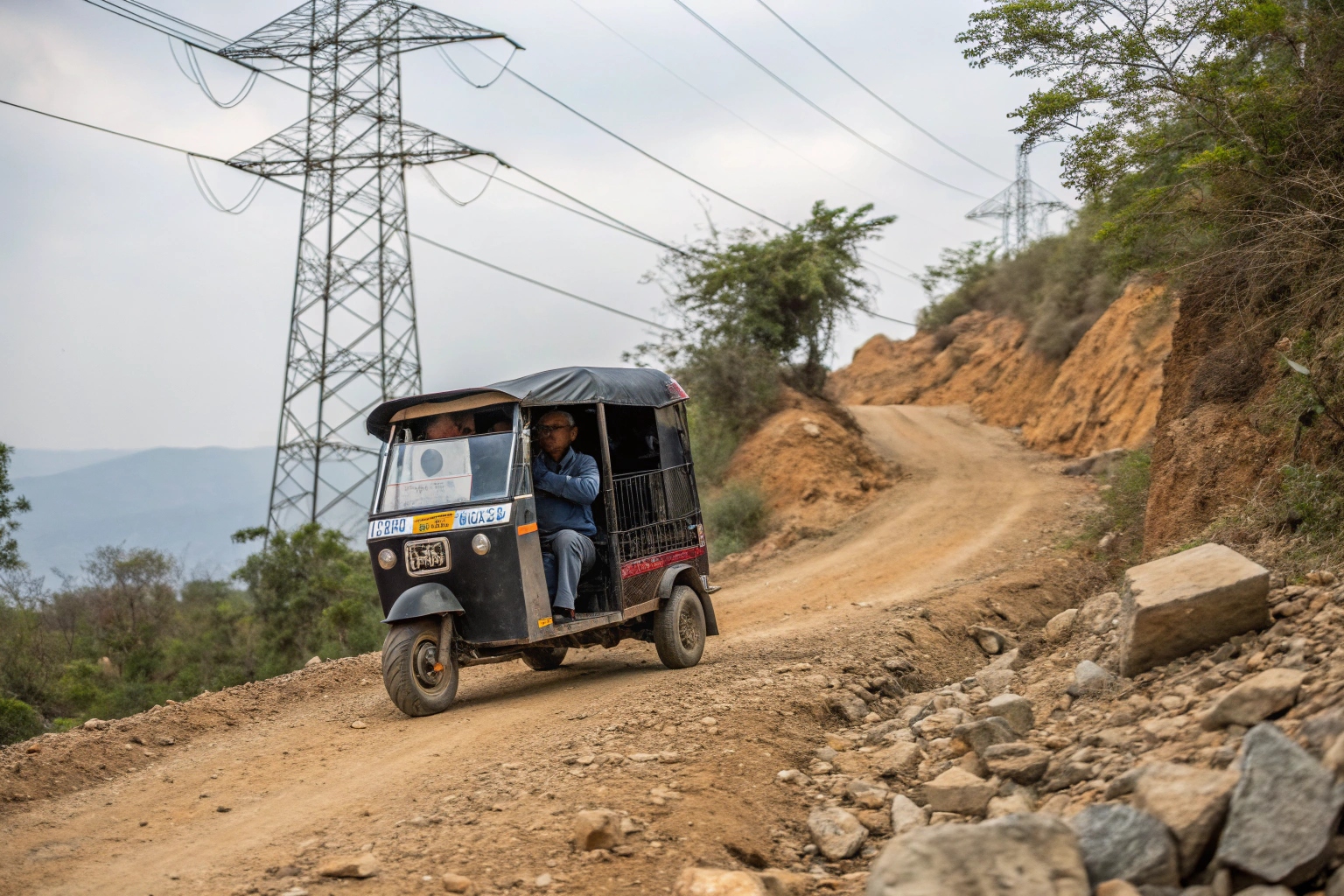
The top speed we test here at the factory is in ideal conditions: a single driver on a flat, smooth surface. But your world is not a test track. Every extra kilogram of weight and every degree of incline fights against the motor. I always tell my clients to think about their daily reality. A vehicle that is perfectly fast for the flat streets of Bangkok might feel very slow in the hilly suburbs of a city in Peru. It’s essential to understand that the advertised speed is a starting point, not a guarantee under all conditions. Here are the biggest factors that will slow you down in the real world.
| Real-World Factor | Impact on Speed | My Advice to Buyers |
|---|---|---|
| Vehicle Load | Significant decrease. Every passenger or box of cargo requires more energy just to get moving, leaving less power available for top speed. | Always think about your average load. A tuk-tuk for six people will be slower than a tuk-tuk for three with the same motor. |
| Road Incline | Major decrease. Climbing hills forces the motor to focus all its energy on torque (pulling power), which dramatically cuts the vehicle's speed. | If your daily routes include hills, you must prioritize a high-torque motor and gearing over a high top-speed rating. |
| Wind Resistance | Moderate decrease. This becomes more noticeable at higher speeds, especially for tuk-tuks with large, enclosed cabins or canvas roofs. | This is a factor for taxi models. An open-frame cargo trike will have less wind resistance than a fully enclosed passenger model. |
| Road Surface | Minor decrease. Driving on dirt, gravel, or poorly maintained roads creates more friction than smooth asphalt, which slows the vehicle down. | While you can't repave the roads, just be aware that rough terrain will naturally reduce your vehicle's top speed. |
Why Do Driving Habits and Regulations Limit Electric Tuk-Tuk Speed?
You want the fastest tuk-tuk possible, but you're worried about safety and local laws. Pushing for maximum speed could make your vehicles dangerous or illegal in your market.
Aggressive driving drains the battery faster and can be unsafe, while local traffic regulations often impose strict speed limits on three-wheeled vehicles. The maximum legal speed often becomes the vehicle's true top speed, regardless of its technical capability.
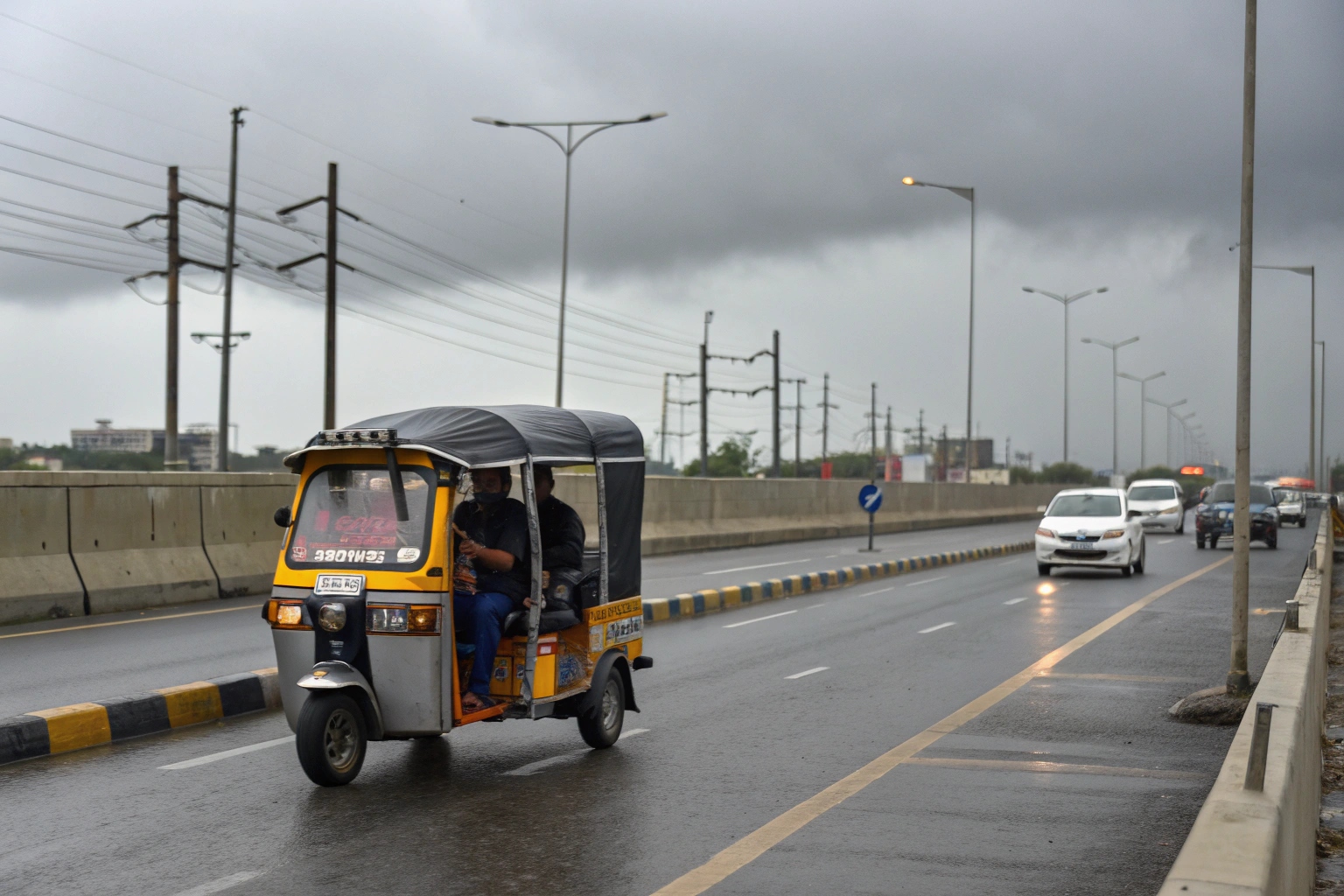
Even if you have the perfect motor and ideal road conditions, there are two final factors that put a hard limit on speed: the driver and the law. A driver who constantly accelerates hard might feel fast, but they are also draining the battery much more quickly, which can reduce the overall performance and range. However, the most important factor is local law. We export to many countries, and each one has different rules. For example, some cities in the Philippines or India have specific speed limits for commercial tricycles, often around 40-50 km/h. As an importer, you must know these rules. There is no point in ordering a 60 km/h tuk-tuk if the legal limit is 40 km/h. We often program the controllers to match our clients' local laws to ensure the vehicles are safe and compliant right out of the container.
What Should B2B Buyers Consider When Evaluating Tuk-Tuk Speed?
You need to decide on the right speed for your fleet. Choosing a speed that is too slow will frustrate drivers, while too fast can be unsafe and inefficient for the vehicle's purpose.
Evaluate speed based on the tuk-tuk's job. Passenger trikes need a safe, moderate speed (25-35 km/h). Cargo models require limited speed (under 40 km/h) for braking with heavy loads. Taxis can be faster (up to 55 km/h) for commercial efficiency.
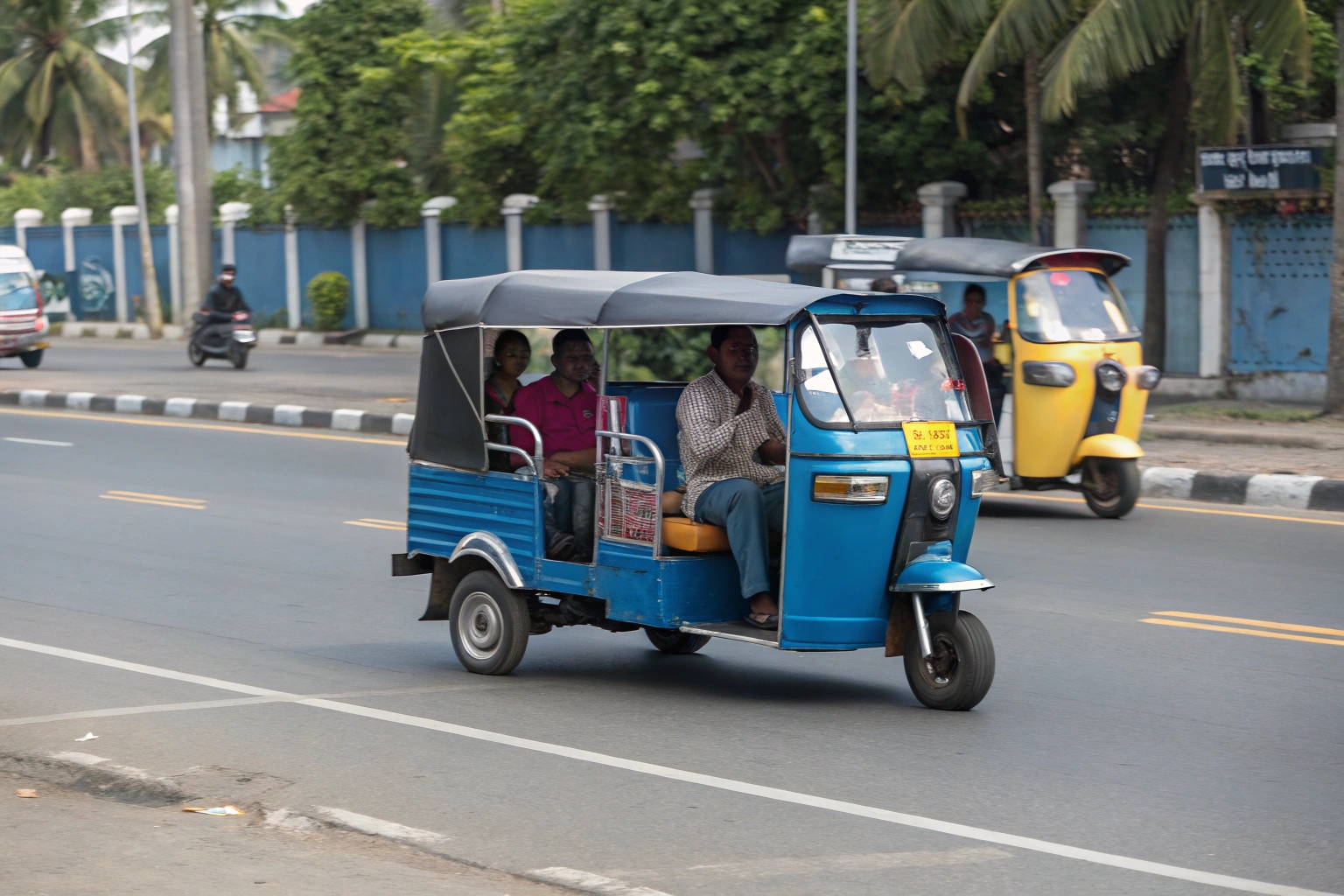
The final decision should not be about getting the "fastest" tuk-tuk. It should be about getting the tama speed for your business model. The needs of a cargo operator are completely different from a city taxi service. From my experience working with hundreds of B2B buyers, the most successful ones match the vehicle's speed to its daily job. A faster motor and battery cost more, so paying for speed you don't need or can't safely use is a waste of money. Here’s a simple guide I use to help my clients make the right choice.
| Business Model | Primary Concern | Recommended Top Speed | Why This Speed? |
|---|---|---|---|
| Passenger Tricycle | Safety of passengers | 25 - 35 km/h | At these speeds, the vehicle is stable, easy to control in neighborhoods, and safe for its occupants. It's a comfortable ride, not a race. |
| Cargo Tuk-Tuk | Braking effectiveness | 40-45 km/h | When you have 500kg of cargo, stopping safely is more important than going fast. A higher speed would make the braking distance dangerously long. |
| Tuk-Tuk Taxi | Commercial efficiency | 50 - 55 km/h | This speed is fast enough to be efficient for city transport and completing more trips per day, but still within a safe range for urban traffic. |
Pangwakas na Salita
Choosing the right tuk-tuk speed is about matching the vehicle's capability to its purpose. Balance technical specs with real-world conditions and safety to ensure your fleet is efficient, profitable, and safe.

